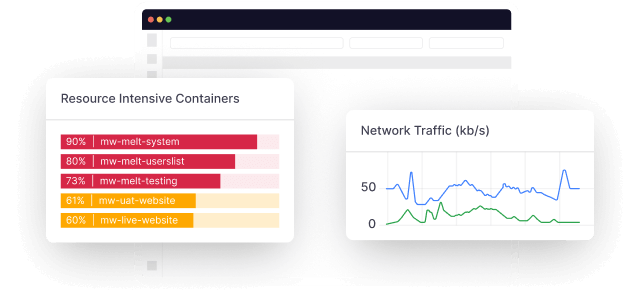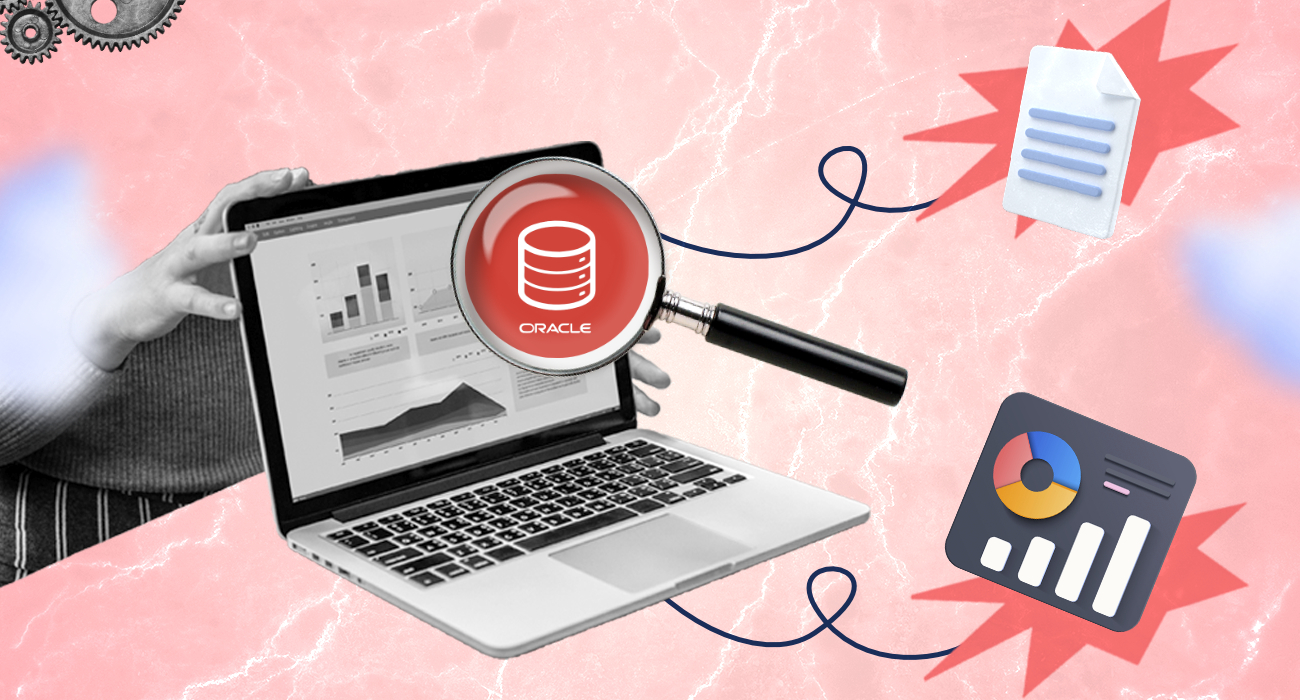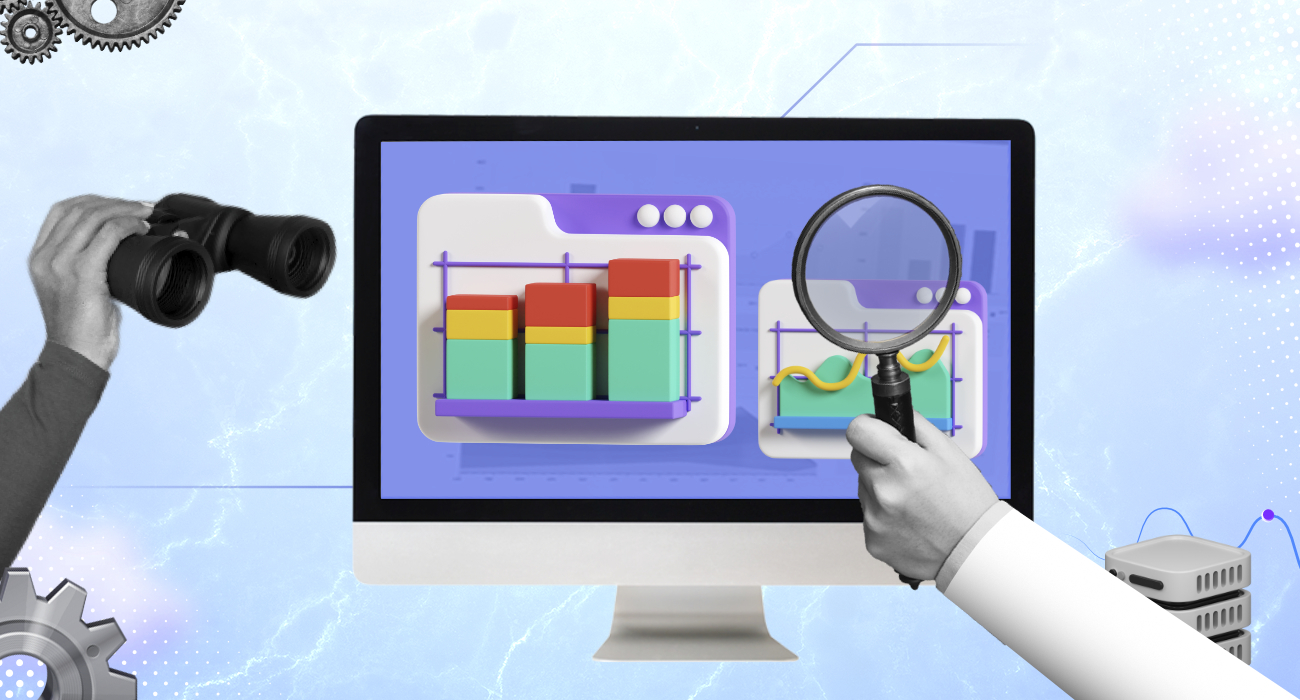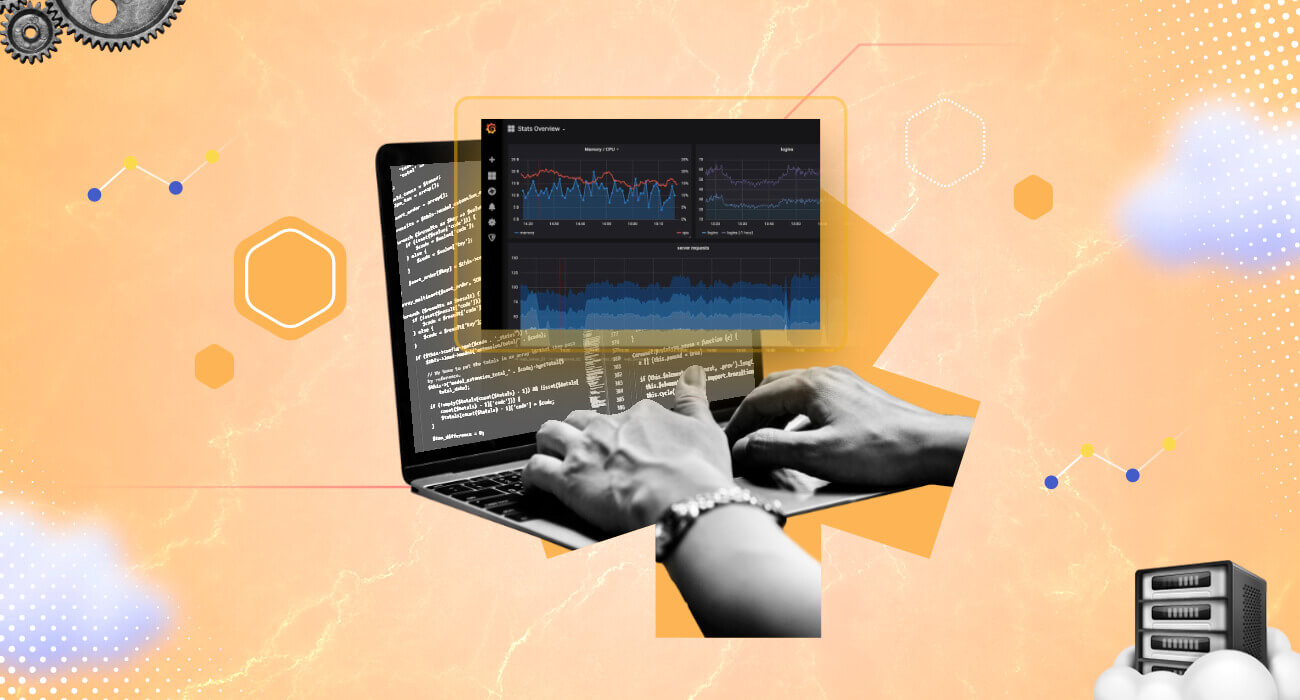Infrastructure monitoring is a critical part of any modern organization’s IT infrastructure. It helps to ensure that your systems are working as expected, and it can also help you identify issues early on so that they can be resolved quickly.
But how do you know if your infrastructure is healthy? What should you look for? How do you monitor various parts of your network and servers?
This comprehensive guide will answer these questions and more!
What is Infrastructure monitoring?
Infrastructure monitoring is the process of collecting and analyzing data about a system or application. It can be used to detect and identify issues before they impact users and to identify and resolve issues after users are impacted.
Infrastructure monitoring tools help you monitor your infrastructure by providing real-time visibility into critical components such as servers, networks, and applications. The most common types of monitoring tools include:
- Log monitoring software – Log monitoring tools can be used to search through log files (such as those generated by network devices), looking for specific events that indicate problems with your systems or application. They may also include rulesets that allow them to filter out noise when searching large amounts of data.
- Network monitoring tools – There are two types of network monitoring tools: network performance and device monitoring. These tools capture packets on their way through an internet protocol (IP) network so they can be analyzed later without interfering with normal operation. Additionally, you can gain insight with a network scanner to help identify any potential security or performance issues.
Types of Infrastructure monitoring
There are two main types of infrastructure monitoring, agentless monitoring and agent-based monitoring. Both have their advantages and challenges, so an ideal solution would be to use one that meets your requirements:
Agentless Monitoring
Agentless infrastructure monitoring is a method of monitoring the performance and status of computer systems and network devices without the need for installing software agents on the monitored systems.
This method typically relies on technologies such as Simple Network Management Protocol (SNMP), Windows Management Instrumentation (WMI), and Hypertext Transfer Protocol (HTTP) to collect data from the monitored systems. The monitoring platform establishes a connection to the system using one of these protocols and can then collect data such as CPU usage, memory usage, disk usage, and network traffic.
Agentless monitoring is an efficient, low-overhead method of monitoring systems and network devices. It can be helpful in environments where a large number of systems need to be monitored.
Agent-based monitoring
Agent-based monitoring is a method of monitoring the performance and status of computer systems and network devices by installing software agents on the monitored systems. The agents collect and report data to a central monitoring platform.
Agent-based monitoring is also typically more flexible and customizable than agentless monitoring. The agents can be configured to collect specific data, and the monitoring platform can be configured to alert on specific conditions.
Agent-based monitoring also enables monitoring systems that are behind a firewall or other security measures, or it can provide monitoring information on systems that are not exposed to the network.
Another advantage of agent-based monitoring is that it can continue to collect data even if the network connection between the monitored system and the monitoring platform is lost. The agents can buffer the data and send it to the monitoring platform when the connection is re-established.
Agent-based monitoring is a powerful method for monitoring systems and network devices, providing granular details and information about system performance. It can be beneficial in environments where it is necessary to have detailed information about the systems being monitored or when agentless monitoring is not possible because of security reasons or other limitations.
How Infrastructure monitoring works
Infrastructure monitoring tracks the performance, availability, and resource utilization of containers, hosts, and other backend components.
Infrastructure monitoring typically entails instrumenting a host by installing an agent. With Middleware infrastructure monitoring, you can start the instrumentation process with a straightforward guided installation. Our agent recognizes the running applications and log sources in your environment and automatically recommends the correct agent for your application.
Once fully instrumented with your host, our agent will collect system data and send it to our infrastructure monitoring solution’s backend engine to process the data and display the results in real-time (and historically) in the unified dashboard.
Here’s a small architecture diagram showing you how Middleware collects and processes your data to provide you with robust Infrastructure monitoring:
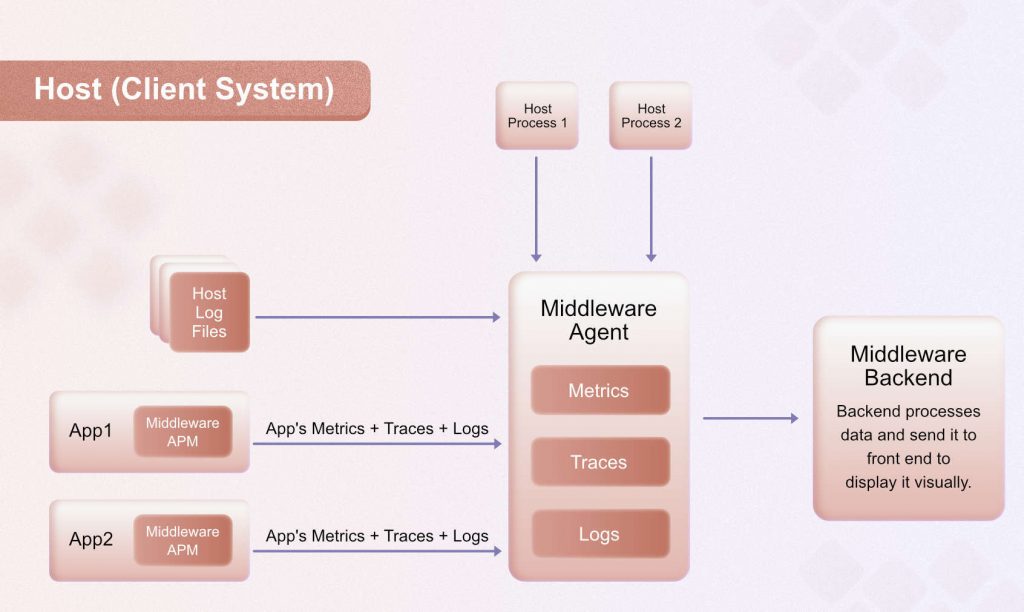
What are the benefits of Infrastructure monitoring?
The primary benefit of infrastructure monitoring is the ability to proactively react to worst-case scenarios, saving Dev’s time and Ops’ money. As a result, infrastructure monitoring is always at the core of every operation.
Once implemented well, you’ll get the following benefits:
1. Boost reliability
Using infrastructure monitoring not only helps DevOps discover current issues but also assists in quickly resolving them. As a result, It reduces the Incident resolution time boosting reliability and reducing end-user complaints.
2. Improved resource management
Resources are often one of the significant and most important parts of any infrastructure. That’s why DevOps and SRE teams always pay special attention to resource management. You should never have fewer resources than you need, nor should you have more resources than needed. Instead, you should aim to have the most optimal amount of resources. Infrastructure monitoring helps you understand what is optimal for you.
3. Improved testing
When you deploy any new applications, update existing ones, or reconfigure a part of your Infrastructure that your application relies on, you need to check that all your systems and apps aren’t negatively affected by this change. Infrastructure monitoring allows you to constantly check how your apps operate before and after reconfiguring.
4. Early problem detection
Infrastructure monitoring helps you collect & analyze real-time and periodic data. Using this data, you can get a close understanding of what’s going on in your Infrastructure. You can also run scans to detect any issues in your Infrastructure. By doing this, you can identify problems early on in your Infrastructure before they affect your workflow and work towards fixing them.
5. Improved security
Security is always an integral part of any organization. Monitoring your Infrastructure can help you identify security threats and compromises to help you improve security. For example, adding a few suspicious users with unexpected privileges can indicate a possible security breach.
6. Increase ROI
In today’s cloud-native world, Infrastructure monitoring significantly impacts a company’s return on investment. Further, DevOps and SRE teams devote less effort to monitoring your IT systems and more time to providing better value to your end-user.
Infrastructure monitoring use cases
Operations teams, SREs (site reliability engineers), and DevOps engineers generally use infrastructure monitoring to help them:
1. Troubleshoot performance issues
Infrastructure monitoring is commonly used to stop issues from turning into outages. An infrastructure monitoring tool can display which hosts, containers, or other backend components failed or encountered latency during an incident. In addition, engineers can identify which hosts or containers were down when an outage occurred.
2. Network and infrastructure performance management
Many Infrastructure monitoring tools also offer separate solutions for network and infrastructure performance management or include application monitoring in a suite of their monitoring services.
Depending on your solution, you can ensure that your applications aren’t negatively affecting your network or the rest of your Infrastructure. Since today’s applications can take up a significant chunk of network resources, your company must ensure that they have the proper Infrastructure to support its business applications.
Alternatively, you may have a network monitoring solution that can contain APM capabilities. These tools usually examine application performance from a network perspective, showing how your business apps affect network performance and security.
3. Forecast backend requirements
Businesses can anticipate future resource demand by looking at historical infrastructure measurements. For instance, if some hosts were under-provisioned during a recent product launch, you can specify additional CPU and RAM in the future during similar events to reduce stress on crucial systems.
4. Configuration assurance testing
While discussing the benefits of Infrastructure monitoring, we specified improved testing, which is also one of the most popular use cases. SMBs and Mid-size companies usually use Infrastructure monitoring to ensure their applications don’t crash during or after a feature update.
Key Infrastructure monitoring challenges
The rising complexity of the software development architecture has not only caused a rise in the existing IT monitoring challenges but has also introduced some new challenges, especially in the enterprise.
Here are the 3 key Infrastructure monitoring challenges and their solutions
1. Too many monitoring tools
It is normal for any major organization to have roughly 8-10 monitoring tools for various purposes, such as monitoring storage, network performance, applications, logs, traces, databases, devices, and so on. On top of that, these tools have their inbuild monitoring dashboards.
So getting a clear view of what’s running where in one place is a rising challenge in IT Infrastructure monitoring, especially in enterprises.
Solution: Try to opt for tools that provide monitoring solutions for multiple use cases. Secondly, you can disable the dashboard of these individual tools and use a full-stack observability platform like Middleware that allows you to seamlessly pull data from multiple sources and bring them into one unified dashboard.
2. Too big to monitor
The expanding number of networks and devices that need to be monitored is one of the most rising challenges with infrastructure monitoring. As the organization grows, so does the infrastructure.
Keeping just a track of devices, apps, programs and network is a challenge in itself and monitoring each of them makes it even more difficult.
Solution: You need scalable infrastructure monitoring software like Middleware that can track and monitor end-to-end services and compile all the data from sources into a single dashboard.
3. Rising costs of Monitoring tools
Infrastructure monitoring is expensive. Many legacy tools like Datadog still charge you a hefty subscription fee to collect and monitor your data.
Yes, there are a few affordable monitoring tools, but they only monitor your data and don’t offer data storage facilities. So as an end user, you have to pay to store your monitoring data in the cloud or on-premise. All of this adds to just the same as paying for other legacy monitoring tools.
Solution: You need an infrastructure monitoring tool that charges you for the data you process and monitor, not for the number of machines and users you add.
Best practices for Infrastructure monitoring
Adhering to a few best practices can help you get the most out of your infrastructure monitoring program:
- Opt for automation: Improve your MTTR by using infrastructure monitoring tools that offer automation. It will enable you to move to AIOps for infrastructure monitoring and achieve comprehensive end-to-end observability across the entire stack.
- Install the agent across your entire environment: Many SREs and IT admins install the agent only on a particular application and its supporting environment. But it’s not an ideal approach. In order to get the most out of your Infrastructure monitoring tool, you should install the agent (if it’s an agent-based tool) across the entire production environment and not just a section of it.
- Prioritize alerts: When dealing with Infrastructure, hundreds of errors can trigger an alert. So as an SRE, it’s important to prioritize which alerts are important.
- Create custom dashboards: Many Infrastructure monitoring tools like Middleware provide the ability to create custom, role-specific dashboards. Use them to your advantage.
- Test your tool: When adding a new application to your existing Infrastructure monitoring environment or when adding up a tool from scratch, it’s always an Infrastructure monitoring best practice to do a test run so you know everything’s working correctly.
What are the best Infrastructure monitoring tools?
A wide variety of infrastructure monitoring tools are available, but they all share similar features. So here we have shortlisted 6 best infrastructure monitoring tools that offer real-time insights, are easy to use and offer better features than other tools in the market:
1. Middleware
Middleware is a full-stack observability platform that provides Infrastructure Monitoring capabilities to modern IT teams. The tool helps you track the root causes of an error using its traces, logs and metrics.
It also tracks the health & performance of your complete tech stack. With over 50+ Integrations to improve your overall workflow, it reduces the gap between front-end and back-end data visible in a single integrated dashboard.
2. Nagios Core
Nagios Core is the best choice if you’re looking for a comprehensive, feature-rich, and easy-to-use infrastructure monitoring tool. This open-source software application monitors remote hosts and networks, alerting users to any developing problems.
Nagios Core can also act as a part of an infrastructure monitoring solution that monitors all servers in your company or organization, including operating systems (OS), applications, connectivity issues, and much more!
3. Munin
Munin is a system for collecting and displaying time-series data. It can be used to monitor local or remote hosts and run on an internal server and multiple external hosts.
Munin was originally written by David Wheeler in Perl and continues to be developed by many people working together under the Munin Project. The project has been forked from MRTG (the Monitor Remote Traffic Grapher), which was itself based on RRDTool.
4. Icinga and Icingabeat
Icinga is an open-source monitoring tool that’s been around for a long time. It was created by Nagios but has since been forked into its project.
Icingabeat is an extension of Icinga that can monitor network devices, servers, and applications. It can be used on top of any existing infrastructure management system (such as Nagios) or as a stand-alone platform with its built-in user interface.
5. Grafana
Grafana is a tool for visualizing time series data. It can be used with other tools to create a dashboard, and many organizations use it to monitor their infrastructure, applications, and services.
Grafana allows you to set up alerts when something goes wrong—for example, if your server load increases suddenly or if a user logs in from the same IP address too many times in a row (these are two common indicators of problems). You can also configure Grafana to send notifications whenever an alert occurs.
6. InfluxDB and Telegraf
Telegraf is an agent that collects, aggregates, and writes metrics to InfluxDB. It can collect data from a wide variety of sources, including Kubernetes configuration files, Prometheus time series databases, Graphite collectors, and more.
Telegraf uses Go as its programming language.
How to choose an Infrastructure monitoring tool?
When choosing an infrastructure monitoring tool, consider checking off these factors in your evaluation sheet to make sure you select the right Infrastructure monitoring tool:
- Unified Infrastructure monitoring: Today’s IT infrastructure consists of multiple elements like servers, networks, applications, numerous technologies, and much more. So when choosing an infrastructure monitoring tool, prioritize a tool that monitors the maximum components of your infrastructure.
- Customizable dashboard: When it comes to infrastructure monitoring, it’s not just the SREs who monitor the systems. There are often customer support teams, network engineers and other departments who monitor the infrastructure for their department-specific needs. So choose an Infrastructure monitoring tool that offers customizable dashboards.
- Cloud-native: You must employ an infrastructure monitoring solution that connects with third-party cloud providers and orchestration tools if your stack includes serverless functions, containers, or cloud services.
- Customizable alerts: As mentioned above, multiple teams use an infrastructure monitoring tool, so prioritize a solution that can create custom alerts.
- Cost: Cost has mostly been an underrated factor in the monitoring space, but it’s one of the critical factors you should consider, especially in 2023, when business owners need to spend every dollar wisely.
How to get started monitoring Infrastructure?
There are many ways to get started monitoring infrastructure. Here are some of the most common:
- Use a third-party service like Middleware to monitor your site’s performance and availability. Our services can be used for web applications and serverless functions, so you don’t need to manage any code on your servers. We have integrations with GitLab CI/CD, AWS Lambda/S3 triggers, etc., making it very convenient for you to monitor your application or migrate existing ones over time.
- Use open-source tools such as Prometheus (for monitoring application metrics), Grafana (for dashboards), Graphite (for database metrics), and InfluxDB (for time series database). All these tools provide different types of information; it’s up to you which one fits best into how you want things done!
Conclusion
We hope this article will help you understand what infrastructure monitoring is, how it can benefit your business and why it’s so important.
If you don’t have a tool yet, we recommend Middleware as an ideal solution for your needs. It has all the features necessary to empower DevOps teams and enable Agile development practices – without worrying about manual work!
Sign up on the platform to see how we can help you with Infrastructure monitoring
What is infrastructure monitoring?
Infrastructure monitoring is the process of collecting and analyzing data about a system or application. It can be used to detect and identify issues before they impact users and to identify and resolve issues after users are impacted.
What is the role of infrastructure monitoring?
The role of infrastructure monitoring is to monitor the health and performance of all tech stack components like Servers, VMs, containers, databases, and more.
What kind of problems can be detected with infrastructure monitoring?
Infrastructure monitoring can help you detect any error or issue across your entire infrastructure ranging from server downtime, unauthorized device connection, network errors, and more.
Why is infrastructure monitoring important?
Infrastructure monitoring is important because it helps you identify performance bottlenecks and errors in your infrastructure. It helps reduce MTTT and MTTR.




